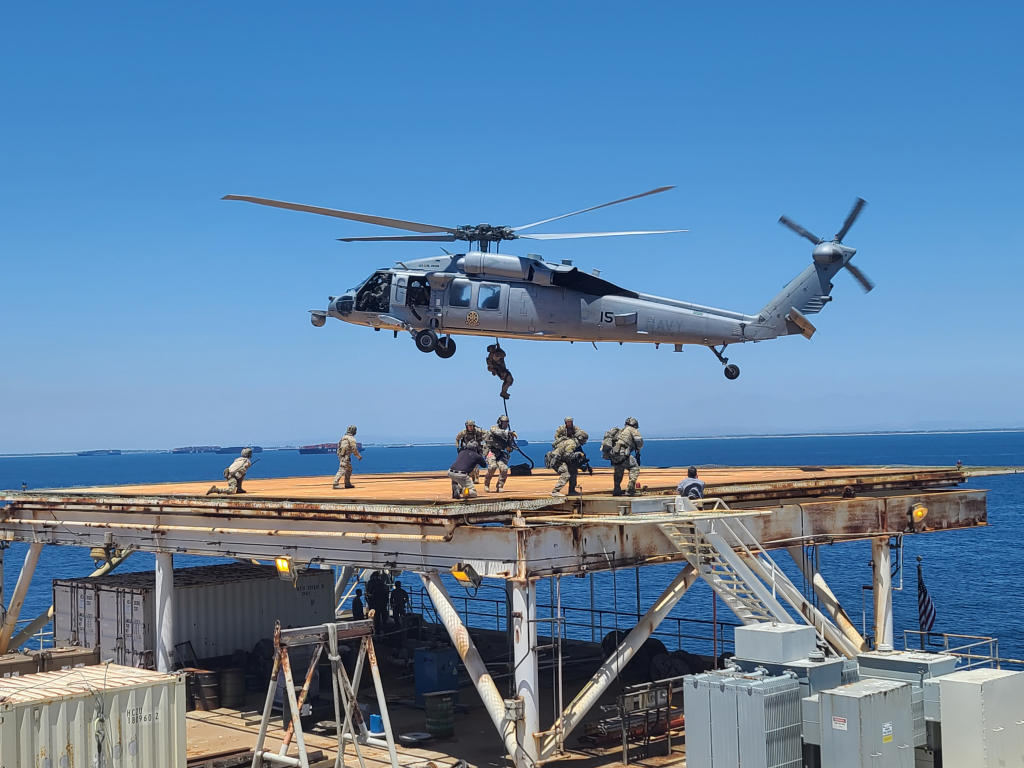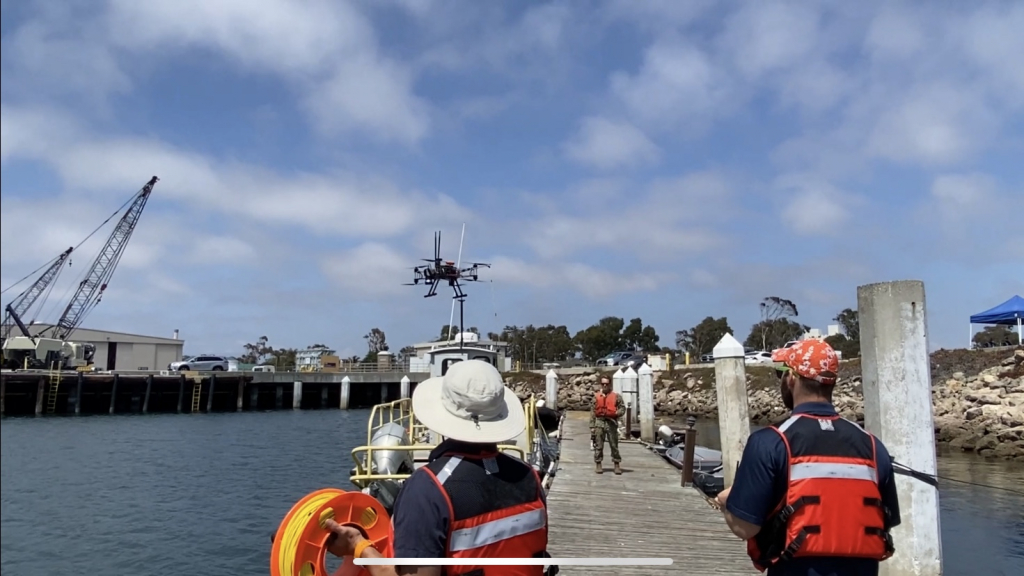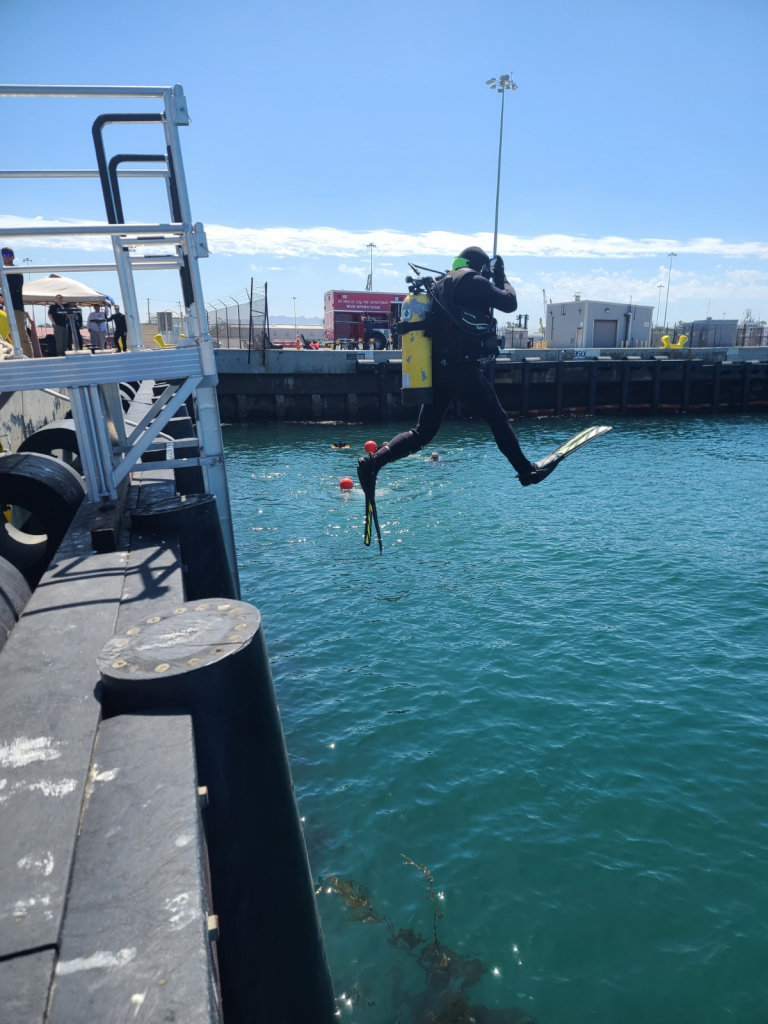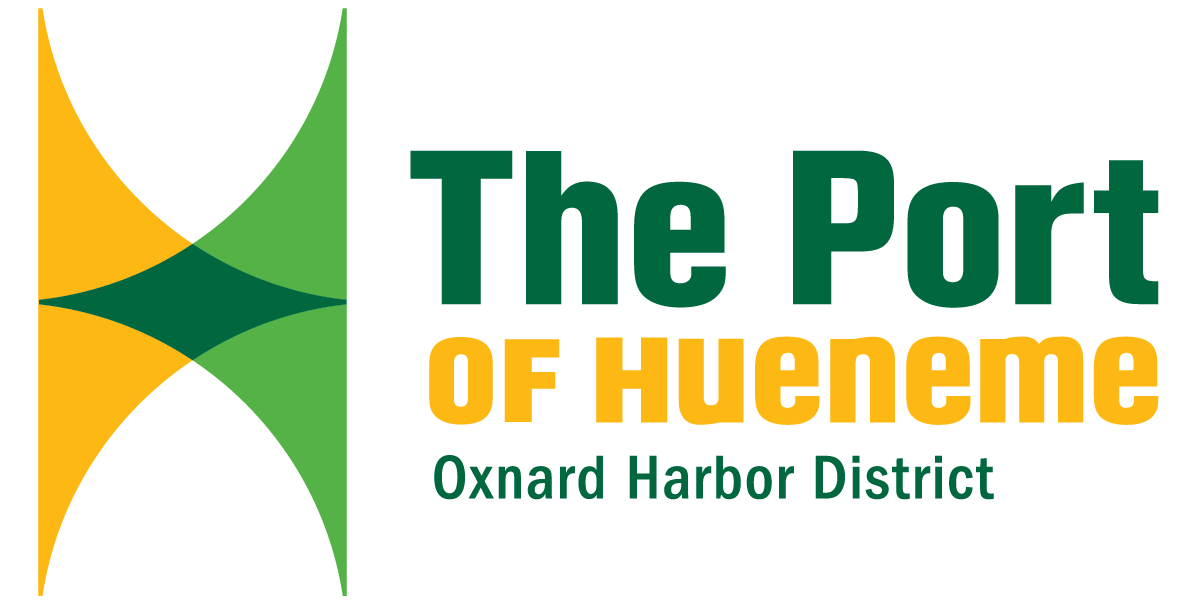Coastal Trident 2021 Demonstrates Collaborative Success
State of the Art Port and Maritime Program Counters Port & Maritime Threats
August 5, 2021 — Poseidon, known as the ruler of the sea, is oftentimes depicted as carrying a three-pronged spear, known as a trident, for protection. It is fitting that the operational research program created to counter threats to port and maritime security and sustain the global operations of naval forces is named the Coastal Trident.
The program was established 15 years ago to support the Port of Hueneme and local response organizations in addressing the complex nature of threats to port and maritime security. Since then, Coastal Trident has grown in scope and influence and now regularly involves the participation of more than 150 federal, state, local government, academic, and private sector organizations.

An exercise with the United States Coast Guard’s Maritime Security Response Team-West was leveraged to conduct Advanced Naval Technology Exercise experiments with wearable sensors and remote physiological monitoring.
“Partnering with local, state, and federal agencies is imperative because in today’s environment of heightened security, it is important to collaborate when it comes to having a focused response effort if, and when, an emergency was to occur at the Port of Hueneme,” said Oxnard Harbor District President, Jason Hodge.
The Coastal Trident program is built on the unique and long-standing relationships between the Port of Hueneme, the Navy and the regional public and private sector partners dedicated to Port and Maritime Security.
Since its inception, the program has served to not only increase regional public safety and security but also as a technology testing, experimentation and transition venue to ensure our first responders are equipped with the tools and capabilities needed.
Alan Jaeger, NavalX Ventura Tech Bridge Director at the Office of Research and Technology Applications Manager at the Naval Surface Warfare Center, Port Hueneme stated: “With the formation of the FATHOMWERX lab at the Port of Hueneme, the program and the region now have a world-class venue to accelerate capabilities to the fleet, warfighter, and public safety professionals.”

Coastal Trident participants test the Naviator, the first multi-domain air/water drone.
Coastal Trident exercises are regularly scheduled to sharpen the collaborative team’s response to emergency situations and to prepare for potential real-world disasters using best practices and effective means of communication.
“There is a real value in having everyone work together to test response times to emergency scenarios as well as improve upon the systems used to reinforce and enhance homeland security here at the Port of Hueneme,” said Kristin Decas, CEO & Port Director.
Coastal Trident’s alignment with the Advanced Naval Technology Exercise (ANTX) was initiated in 2015 by the Naval Undersea Warfare Center’s Newport Division as a field experimentation resource for the Navy’s research and development and science and technology communities. ANTX is designed to provide a low-risk environment in which technologies can be evaluated for their abilities to address near-term technical priorities for the naval warfighter.
The Naval Surface Warfare Center’s Port Hueneme Division leverages the unique environments, resources, and subject matter expertise available through program stakeholders to conduct its ANTX that focuses on evaluation of leading-edge technologies to meet the needs of the naval warfighter and maritime security partners.

In June, the Naval Surface Warfare Center, Port Hueneme Division conducted an exercise with the Los Angeles Sheriff’s Department (LASD) – Special Enforcement Bureau involving the detection of radiological materials aboard an offshore oil and gas platform. Personnel from LASD SWAT boarded the platform via surface craft and conducted a search of the facility after receiving simulated intelligence regarding a radiological threat. Upon detecting a radiological signature, they requested support from LASD’s HAZMAT detail, who inserted aboard the platform via helicopter to locate, identify, and determine disposition for the hazardous materials.
Dock Talk Newsletter
Our niche port is doing big things globally, and within our community. Sign up for our Dock Talk e-newsletter to receive news and upcoming events from The Port of Hueneme directly to your inbox!
We will never sell, trade, or give your information away. Read our Privacy Policy.
